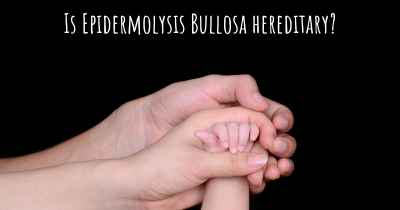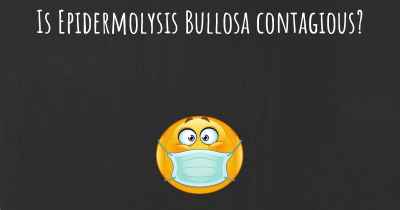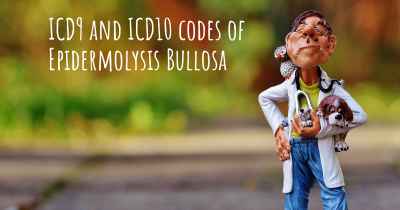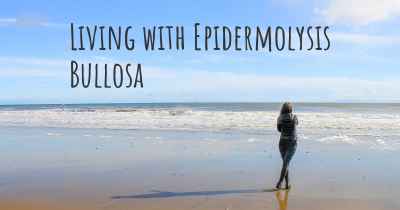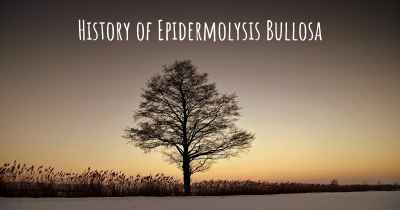What is the life expectancy of someone with Epidermolysis Bullosa?
Life expectancy of people with Epidermolysis Bullosa and recent progresses and researches in Epidermolysis Bullosa
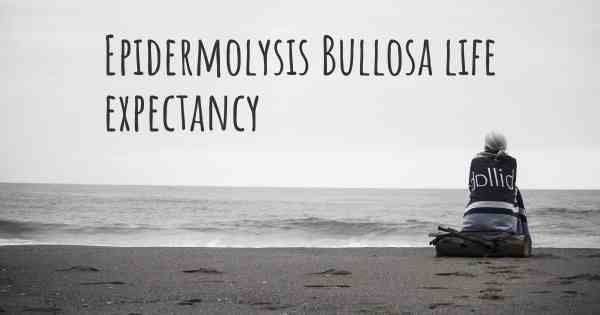
Epidermolysis Bullosa (EB) is a rare genetic disorder that causes fragile skin prone to blistering and tearing. The life expectancy of individuals with EB can vary significantly depending on the subtype and severity of the condition. Severe forms of EB can lead to life-threatening complications, such as infections and malnutrition, resulting in a reduced life span. However, with proper care and management, individuals with milder forms of EB can live into adulthood and beyond. It is crucial for patients to receive specialized medical care, wound management, and nutritional support to improve their quality of life and potentially extend their lifespan.
Epidermolysis Bullosa (EB) is a rare genetic disorder that affects the skin and mucous membranes. It is characterized by extreme skin fragility, leading to the formation of blisters and erosions with minimal friction or trauma. EB is caused by mutations in genes responsible for producing proteins that help anchor the layers of the skin together.
The severity of EB can vary widely, ranging from mild forms with localized blistering to severe forms affecting large areas of the body. The condition is typically present from birth or early infancy and persists throughout a person's life. EB can significantly impact the quality of life, causing chronic pain, impaired mobility, and increased susceptibility to infections.
Given the diverse spectrum of EB subtypes and the varying severity within each subtype, it is challenging to provide a precise life expectancy for individuals with EB. However, it is important to note that EB is a lifelong condition that requires ongoing medical care and management.
Some individuals with milder forms of EB, such as Epidermolysis Bullosa Simplex (EBS), may have a near-normal life expectancy. EBS primarily affects the outermost layer of the skin and is associated with a lower risk of complications. With proper wound care, pain management, and preventive measures, individuals with mild EBS can lead relatively normal lives.
On the other hand, individuals with more severe forms of EB, such as Junctional Epidermolysis Bullosa (JEB) or Dystrophic Epidermolysis Bullosa (DEB), face greater challenges and potential complications. These forms of EB can involve extensive blistering, scarring, and internal complications affecting various organs.
Severe forms of EB can lead to life-threatening complications, such as sepsis (blood infection), malnutrition, and aggressive skin cancers. The risk of these complications can significantly impact life expectancy.
It is crucial to emphasize that individual experiences and outcomes can vary widely even within the same subtype of EB. Factors such as access to specialized medical care, wound management expertise, and overall health can influence an individual's prognosis.
While it is difficult to provide a specific life expectancy range for EB, ongoing advancements in medical research and treatment options offer hope for improved outcomes. Researchers are exploring innovative therapies, including gene therapy and protein replacement, that may hold promise for future treatments.
Early diagnosis, comprehensive medical care, and a multidisciplinary approach involving dermatologists, wound care specialists, nutritionists, and other healthcare professionals can help optimize the quality of life for individuals with EB.
It is important for individuals with EB and their families to connect with support networks, patient advocacy groups, and organizations specializing in EB to access resources, information, and emotional support.
Posted Aug 21, 2017 by Michelle 1000

